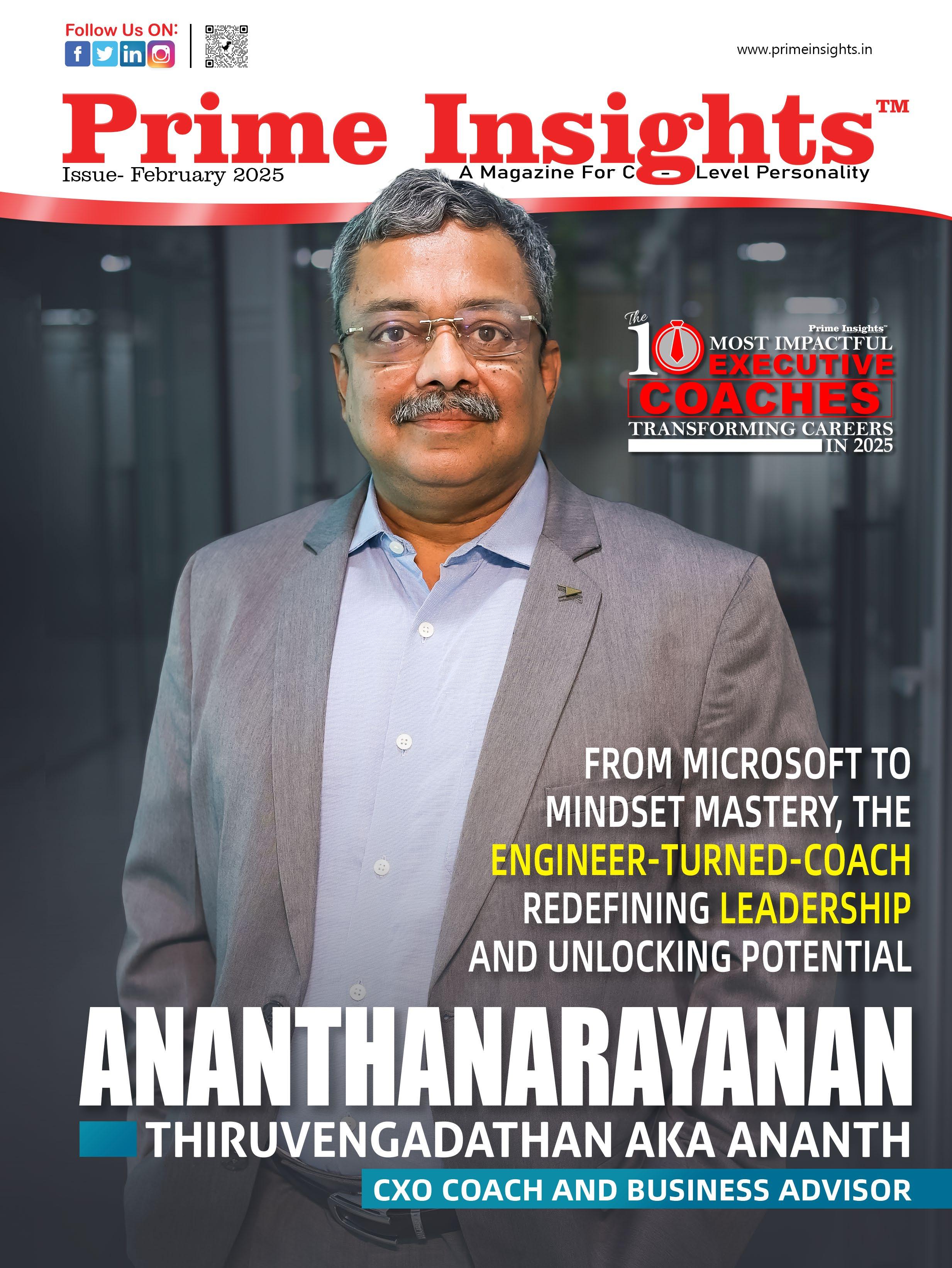

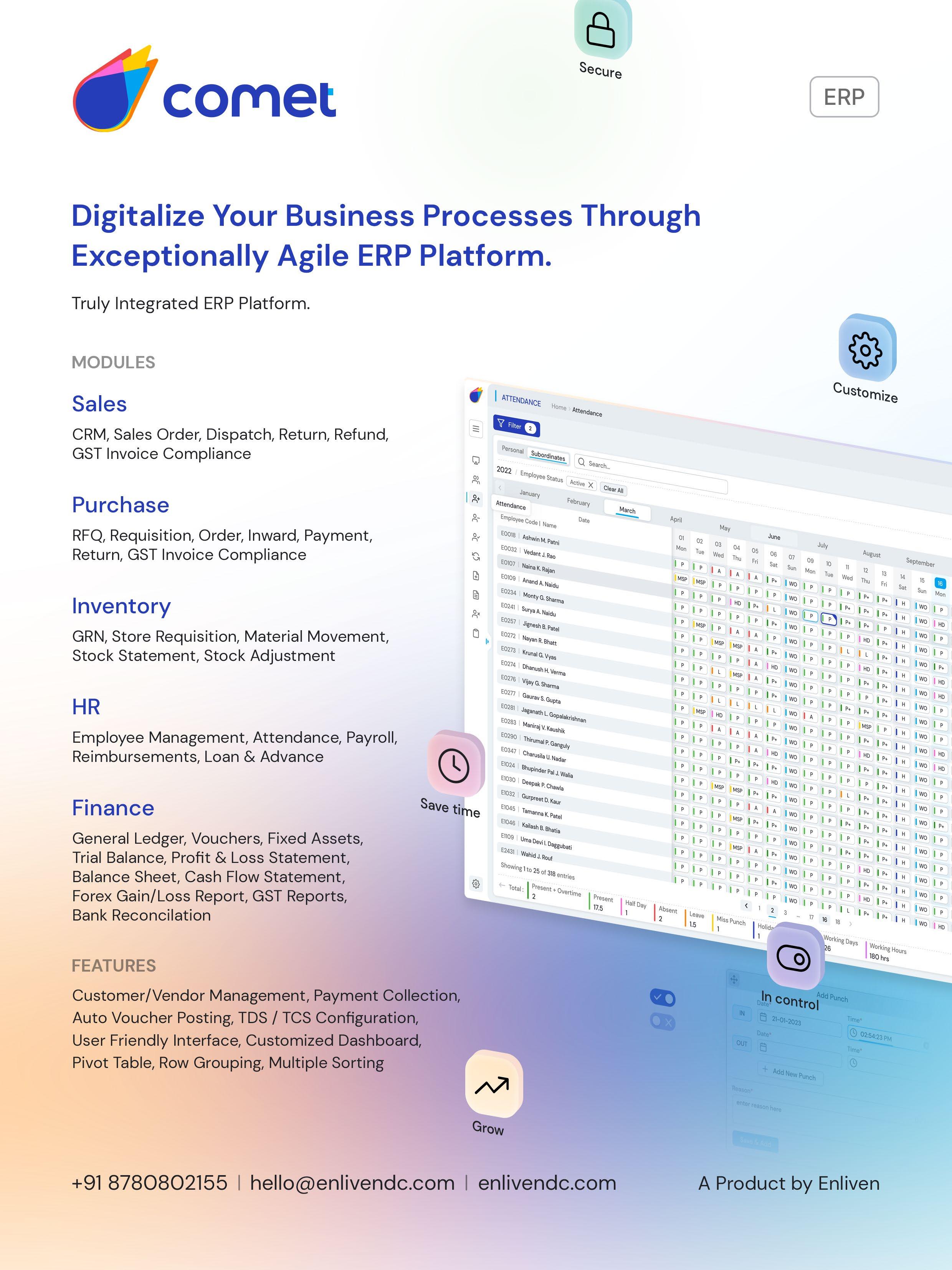







Leadership is a journey, not a destination. And for many, that journey is significantly enhanced by the guidance of an exceptional executive coach. Executive coaches are essential in helping individuals develop these crucial skills, shaping the leaders of tomorrow.
From aspiring managers to seasoned executives, the impact of effective coaching can be profound. It’s about more than just skills development; it’s about fostering selfawareness, building confidence, and empowering individuals to achieve their career aspirations. These elite coaches are not only experts in personal development but also serve as catalysts for organizational transformation, influencing everything from corporate culture to global strategy.
In this edition, we celebrate the coaches who are making a real difference in the lives and careers of their clients. This year’s edition of “The 10 Most Impactful Executive Coaches Transforming Careers in 2025” shines a spotlight on the individuals who are shaping the future of leadership.
We’re thrilled to feature Ananthanarayanan T. or Ananth as he’s known, a highly respected executive coach whose journey from engineering leadership at Microsoft to full-time coaching is a testament to his passion for developing leaders. Ananth’s unique background, combining 24 years of corporate experience with structured coaching methodologies, allows him to offer his clients a distinct and practical perspective.
Ananth’s coaching philosophy is rooted in empowerment. He guides his clients to discover their solutions, helping them introspect, identify their strengths, and overcome the obstacles that stand in their way. His personalized and adaptable approach caters to the diverse needs of professionals across various industries, with a strong emphasis on developing emotional intelligence and self-awareness.
Join us as we delve into the world of executive coaching and explore the transformative impact of Ananth’s work. His insights, experiences, and valuable lessons offer a roadmap for aspiring leaders and a glimpse into the future of leadership development.
As we conclude this edition, we’re reminded that leadership is a continuous journey of growth, self-discovery, and transformation. Ananth’s story, a testament to the power of coaching, inspires us to embrace our potential and strive for excellence. But the conversation doesn’t end here.
We invite you, our readers, to share your own leadership experiences, challenges, and triumphs. Let’s continue to learn from each other and shape the future of leadership together. A special thank you to Ananth for sharing his invaluable insights and to all the coaches who are making a profound difference in the lives of leaders everywhere.
The journey of leadership continues, and together, we can empower the leaders of tomorrow.

Editor In Chief
Ankur Mishra
Editorial Coordinator
Muskan Sharma, Yash Anand , Shweta Singh , Kaustav Sarkar, Trishani Sarkar, Jasmeet Bhatia, Khushi Rawat, Prakriti Gupta, Pinki Singh
Art Director Aryan Jha
Graphic Designer
Virendra Dhami, Bhavana N Sivadas, Deepanshu Bisariya, Sumit Joshi
Head Of Distribution & Production
Shivani Lath, Kaashvi Jain, Tarush Rajawat
Web Development & Maintenance Apoorva Jain, Anup Bhandari
Advertising & Promotion
Rohan Batra, Pakhi Vats, Gaurav Singh, Suhani Joshi, Sakshi Jain
Sr. Business Development Manager
Manish Mishra, Arindam Sarma , Yashwinee Singh
Business Development Manager
Priyanka, Mehul Garg
Data Analysis
Mala, Anand, Khushboo, Jaanvi Singh,Aditya Tomar, Athul Vijay K, Shaurya Agarwal, Vishal Bhat, Rohit Rana, Ankita Singh
Email: yashwinee@primeinsights.in
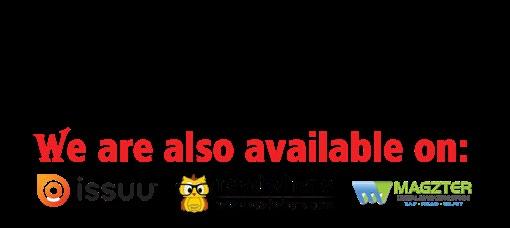

From Microsoft to Mindset Mastery, the Engineer-TurnedCoach Redefining Leadership and Unlocking Potential

Olympeo
Building Homes and Ruling
Real Estate World with Trust, Innovation and Service-Oriented Excellence

Panzer
Empowering Businesses Through Innovation and Digital Excellence in the Evolving IT Landscape







Locuz Enterprise Solutions Pvt. Ltd. Revolutionizing Data Analytics with CuttingEdge Innovation and Narendran Selvan’s Vision for Data-Driven Success of Businesses Acess Meditech Pvt. Ltd. A
in InsurTech Revolutionizes the Industry with AI-Powered Solutions

Democratizing Education in India by Bridging Educational Gaps with Regional Language E-Learning Solutions for India’s K-12 Students


















From Microsoft to Mindset Mastery, the Engineer-Turned-Coach Redefining Leadership and Unlocking Potential
Did you know that many of the world’s top CEOs, athletes, and performers rely on coaches to reach peak performance? This highlights the power of external guidance in achieving extraordinary results, a principle that applies to all levels of leadership.
Not just these people; think about the last time you faced a significant challenge at work. Did you wish you had someone to talk to, someone who could offer objective advice and help you find your solutions? That’s precisely the value executive coaching provides. The executive coaching industry is experiencing a surge in demand, driven by the increasing recognition of its value in leadership development and career advancement.
Ananth is a highly respected executive coach with a unique background. Starting as an engineering leader at Microsoft, he helped establish their largest enterprise customer support centre in India. This experience exposed him to leadership challenges firsthand, sparking his passion for coaching. His mission, in his own words, is simple: “I want my clients to realize their full potential.” This resonates with a client who described him as a “GURU,” saying, “He nurtured me, cared for me, and ensured that I am focused... Anant didn’t have an iota of doubt about my capabilities, and he constantly believed that I was built for bigger things.

He transitioned to full-time coaching in 2012, after a pivotal moment where he recognized the impact of his coaching on emerging leaders. Ananth blends his 24 years of corporate experience with structured coaching methodologies, including ICF competencies, Hogan assessments, and Gallup StrengthsFinder, offering his clients a distinct perspective.
As one client shared,
“He does not solve problems for you but helps you get your insights, which enables you to solve your problems.
In the spotlight for this edition of “The 10 Most Impactful Executive Coaches Transforming Careers in 2025” is Ananth Stay tuned to know his insights, experiences, and valuable lessons.
Prime Insights: Tell me about the executive coaching industry and yourself.
I’m an engineer by background, and do not come from HR which you may associate with coaching. At Microsoft, I helped build their largest Indian enterprise customer support centre, facing challenges in onboarding and manager effectiveness. Addressing these alongside the L&OD director ignited my passion for coaching. A pivotal moment came when I realized my coaching directly contributed to several successful leadership hires at Microsoft. This, combined with a powerful dream, led me to resign in 2011 and pursue coaching full-time. Mentoring underprivileged female engineers further solidified this path. I blend my 24 years of corporate experience with ICF frameworks, offering clients a unique, firsthand perspective.
As one of our L&OD leaders shared, ‘And from then on, whether it was an opportunity to learn, partner, or work someplace really exciting, Ananth has been my trusted coach and friend. In a world that is often busy and sometimes superficial, he is a breath of fresh air.’
My coaching philosophy is simple: I help clients unravel their strengths and find their solutions. I act as a guide, like Jambavan guiding Hanuman or Krishna guiding Arjuna, helping them realize their full potential, or as we say, shaktiya.
Prime Insights: What inspired you to pursue a career in executive coaching, and how has your journey evolved over the years?
I was with the Sales, Marketing, and Services group in Microsoft India when the India Global Technical Centre (IGTSC) was set up in 2004. They were looking for an experienced hand in setting up the biggest technology cluster supporting the Windows platform. The objective was to serve the entire English-speaking global enterprise customers in the long run, starting first with the USA. By 2006 we had challenges of attrition, manager effectiveness, and succession planning. That was when my managing director threw the gauntlet at me to take up management and leadership development at the centre level along with my day job of running my technology cluster. I was an engineering leader and did not come from HR. Over the next five years, I worked with my HR and L & OD directors to land programs for enhancing manager effectiveness and

building coaching as a culture. I got Gallup StrengthsFinder to train and enable managers to become Strengths Performance coaches. Then worked with the L & OD team to land coaching as a culture within the IGTSC. I got certified as a Strengths Performance Coach and a Workplace Coach at Microsoft. And that was the beginning of putting a structure to my coaching practice. Realized I had the strengths and the credentials to follow my passion in becoming an executive coach.
Prime Insights: What is your mission as an executive coach, and how do you define success for your clients? In a single sentence, I want my clients to realize their potential.
When clients reflect on their strengths and introspect on what has helped them and what is preventing their success, the first part of the learning journey is complete. And when they tweak their behaviors to achieve success, I know that my mission is done.
Prime Insights: Can you share a pivotal moment in your career that shaped your approach to coaching?
At Microsoft, we had a giving-away day. That is the day when NGOs come and sell handicrafts and other bric-a-brac made by the underprivileged sections of society to customers. At the end of the day, Microsoft makes a matching contribution to the wares sold so that the NGO can help the underprivileged. This event was held on my floor at the IGTSC. At the event, a cofounder of an NGO approached me and asked for time. She said that she had been observing me over the two days when the event was being held, and she wanted me to mentor a budding female engineer to scale up to greater heights. She told me that these engineers come from distressed or underprivileged families, do not have good role models at home, and lose out in the long run to successfully traverse the engineering path.


I started coaching a girl engineer. Her simplicity, her commitment to learning, and her accountability to implement the actions we had decided on during the session amazed me. There were a couple of sensitive moments in that journey that hit me hard. I realized how privileged I was to be in my position. I also realized the strengths that I have in terms of the way I had planned my career, the clarity of thought, and my networks that I can put to the greater use of the community. And the die was cast. I decided that I would coach the community by the time I reached age 50. I was building my coaching credentials at Microsoft by coaching beyond my team and across the world. One fine September morning I cut the umbilical cord, left the corporate 9:00 to 5:00 job, and embarked on the exciting and fulfilling journey as a coach. I was 46 then, and I am proud to say that 13 years later, I feel that was the most important decision in my professional life.
Prime Insights: What unique methodologies or frameworks do you use to guide clients in achieving their career goals?
I leverage the International Coaching Federation (ICF) competencies to structure my conversations. I am Hogan certified and am a Gallup Strengths performance coach, which helps me look at their strengths and what behaviors may derail them on their professional journey. The unique characteristic of my practice is that though there is an end outcome, the session is not agenda-driven totally. I am willing to explore with the leader their journey, their “wow” moments, and their inhibitions in different situations.

I am willing to listen and harness the power of silence during the session. These moments help the leader to reflect and bring clarity to how they are perceived and helps them arrive at the “aha” moment.
Prime Insights: How do you customize your coaching strategies to address the diverse needs of professionals across different industries?
Explore, discover, and co-create is how I would define my coaching strategy. It is important to understand the leader’s context. I try to understand their industry, their challenges, and the growth strategies of the org before the first session. I do not hesitate to ask questions at the tripartite session to understand what the objective of the coaching engagement is. This would seem basic, but it is necessary groundwork for me to explore and co-create solutions effectively during the coaching journey. The other aspect is to understand the demographics of the leader. Their education, family background, and their personal and professional journey help us understand why they behave the way they do and the perception that is getting built because of their leadership style. In any industry, a leader stands alone. A coach is a guiding light, and I shine it on all their strengths and areas where they may be blindsided. The most important aspect is I do not give a solution. It may sound like jargon. I let the leader internalize the problem, as only then can they operationalize a solution. I have been a practitioner, having led successful global teams, which helps me uncork the insights for the leader to take action.

Prime Insights: What role does emotional intelligence play in your coaching process, and how do you help clients develop it?
It plays a huge role in their success. In the frenetic corporate world, the leaders are stressed out. They may have no one to turn to in times of crisis. This is where the coach helps them to open up about their vulnerabilities. Once this is out in the open during the conversation, the coach helps them thread their emotions and look at what behaviors they need to cultivate to be emotionally strong. Leaders with a higher emotional quotient perform better than their peers, are less stressed out, and are comfortable in their skin. The coach helps them navigate the emotional challenges, and the leaders can stay in the moment, center themselves, and make the right decision dispassionately.
Prime Insights: How do you stay updated with the latest trends and techniques in executive coaching?
When I started on my own 13 years back, I only had my credentials as a workplace coach. I then got certified as an Associate Certified Coach (ACC) with ICF, then moved up to become a Professional Certified Coach (PCC), and now am working on my Master Certified Coach credentialing. I also realized that I need to pick up expertise in psychometric tools that give insights into my client’s strengths or areas of development. I am certified in DiSC, Hogan, and CB5 (Big 5)
methodologies. I am currently also working on team coaching and EMCC credentialing. The coach needs to be updated on the latest trends to enable a better outcome for their clients.
Prime Insights: What are the most common challenges your clients face, and how do you help them overcome these obstacles?
All of them come with different challenges.
In career coaching, typically they are trying to scale up the corporate ladder. Here the typical challenge is their awareness of their strengths and areas of development. I help them get clarity on what we call the Continue/Start/Stop method. The leader needs to look at what behaviors they will continue, what new behaviors they will need to start, and what they should stop to be a better leader.
In executive coaching, again it is about helping the leader scale up. But the focus here is also on how they can be better at their job as they build up for the future. They may have climbed up from a manager to a leadership position, and they are grappling with the typical challenges of a leader now. Here the typical ones are global stakeholder management, global customer management, strategic skills, and building the succession pipe. One important shift they may also be making is moving from a direct team management role to a manager of managers role. Here it is about how they can “zoom in” and “zoom out” and not micromanage their managers. In the past few quarters, mental health has also come out as a big-ticket challenge. I help them understand how to sense it and then co-create solutions that will help them and their teams to be at a comfortable level. The other challenge that the leaders encounter is managing change. In the fast-moving BANI world, this is becoming trickier, and the leader needs to navigate this carefully to ensure that the team does not get demotivated or get burnt out in the process.
Here I help the leaders to first internalize the changes they are looking to bring out and set up processes and structures to roll it out while keeping the teams and their capabilities in mind. It is a delicate balance, and I am proud to say that I have coached leaders through such change transitions.
Prime Insights: Can you share an example of a client success story that highlights the transformative impact of your coaching?
There was a leader who was having an emotional upheaval and was having a breakdown. I listened to the context and helped the leader to look at a way forward instead of dwelling on the past. This helped. Over two sessions the leader overcame all the mental challenges and chose a growth path with a clearer roadmap for the future. I met the leader last week, and today, 1 year later, I am proud to say that the leader is centered, successful, and, most importantly, happy. This is a fulfilling story for me.
Some years ago, I was coaching a cohort of leaders from a panIndian retail chain and had completed four sessions out of eight with them. They were generally busy, and it so happened that


their sessions got scheduled on my birthday. I received my best gift ever when two of the leaders came bouncing into the session proudly declaring that they had achieved their goals way ahead of schedule due to the changes they had implemented in their work styles. It is very difficult for me to describe this feeling of immense satisfaction, and it validated my career shift of following my passion for coaching.
Prime Insights: How do you measure the long-term impact of your coaching on clients’ professional and personal lives?
I can proudly say that the leaders I have coached have fasttracked their vertical transition. They have discovered skills that they did not know they had. They were able to change the perception of how they were viewed by subtle changes in their behavior. I encourage clients to seek input from their spouses, as they offer invaluable, candid observations. I also work on aligning their “work mask” with their “home mask,” reducing stress. I work on their feelings of imposter syndrome by encouraging transparency and authenticity. The productivity of their teams has improved, and they can bring about change smoothly. Some of the leaders still reach out to me years after their engagement has ended to validate their thoughts or give me more business because they have seen the value in it.
Prime Insights: How do you help clients navigate career transitions or leadership challenges effectively? A lot of times they overlap. The challenges derail them in their transition to a bigger role. I coach for skill building and competency building. Competencies are a cluster of skills, and once learned, they can be leveraged anywhere.
It is somewhat akin to swimming. We typically learn swimming in our school days. The skills required are to hold your breath and flail your arms and legs to propel yourself forward and prevent you from drowning. And after that, we may never enter the pool for a long period. But even if you jump into the pool after years, your old competency will come back, and you will not drown. Similarly, if a leader builds a particular competency, it stays with the leader for a lifetime, whether in this role or another. The one thing the leader needs to watch out for is the adjustment needed when roles or levels change; just like in swimming, you need to adjust the style depending on whether you are swimming in a swimming pool, river, or sea.
Career transitions are about using the competencies built in different environments to navigate to success. I help clients to stretch beyond their comfort zone and enable the latent skills to handle the challenges thrown up.
Prime Insights: What strategies do you employ to empower executives to lead with authenticity and purpose?
Openness and transparency are huge qualities that the leader needs to possess to inspire the rank and file in the organization. The team needs to build their trust in their leader. A simple example I use is whether the team is walking along with them or following them. Another example is also how free the team is with their feedback to the leader. Does the team freely give this
feedback, or does it have to be asked for? High-performing teams are self-propelling and do not need to be given instructions on what next to do or how to solve the issues with their peers. The leader needs to build his sensing mechanisms to pick up the cues, and I help the leader distil these cues to work on enabling behaviors so that the team is empowered work on autopilot, and leave the leader free to work on strategizing for the future.
Prime Insights: How do you guide clients in balancing their professional aspirations with personal wellbeing?
I will give you an interesting intersection. I have found that a more generic challenge is prioritization in professional life which may carry into their personal lives. This leads to overwork and stress building up in the leader. Effective empowerment and delegation help restore a good work-life balance that helps them personally too. I have also seen leaders implementing some of the strategies, e.g., planning, prioritization, and delegation, in their personal lives to very good effect. A leader who wears the same mask whether at the office or home is less stressed out, more composed, and a good spouse, good parent, or good sibling. Coming back to your question, a balanced leader is a function of how secure they are in their role, whether at home or the office.
Prime Insights: What trends in executive coaching do you foresee shaping the industry in 2025 and beyond?
An increasing number of professionals are looking for a coach to jump-start their careers. With layoffs increasing, we are seeing a higher increase in managers in their mid-forties who require the services of a coach. Professionals in the 30–40 age group are looking at how to scale up whilst achieving fulfilment at the same time. Professionals in the 20–30 age group are hungry for more and want to fast-track their growth. This will fuel the demand for career coaches. That said, coaches also need to up their game. They need to look at newer trends and new tools to add value. They need to look at how to leverage AI to validate some of their findings and biases.
I have been receiving multiple requests for coaching in 2025 in the first few weeks already, which is way above what I received in the previous years.
Also in India, the ICF chapters are making a stellar effort to evangelize coaching. I was a coach in one of their pro bono assignments in coaching state heads in the education sector. It gave me great insights into this sector and, more importantly, gave me immense satisfaction when I saw the success of my state head.
Prime Insights: How have you integrated technology or innovative tools into your coaching practice to enhance client outcomes?
To build accountability, I send them automated reminders. I keep abreast of the latest trends to ensure that I deliver value. I also got certified in digital coaching so that I can coach on digital platforms by service providers. One skill that I have built not from a technology perspective but from a necessity perspective is that I do not let language come in the way of

coaching. I have successfully coached leaders across Latin America and Europe using language interpreters. I am proud to say that the leaders successfully achieved their objectives, and it did not need language to witness the “Aha” moment of the leader.
Prime Insights: What advice would you give to aspiring professionals seeking to fast-track their careers in a competitive landscape?
Embrace change. Adapt to newer trends. We’ve moved from a VUCA (Volatile, Uncertain, Complex, Ambiguous) world to a BANI (Brittle, Anxious, Non-linear, Incomprehensible) one, and even BANI may evolve as new challenges emerge.
A lot of times professionals feel that the only way to scale up is to move to another org. I strongly refute this. You have built credibility in this org. Make it work for you. Invest time in planning and draw out a roadmap to build competencies. I have posted a couple of articles on this on LinkedIn. You are accountable for your career, so you can’t leave it to someone.
Leverage AI for data collection and data mining so that your time is better used to draw the right inferences. Network more to understand the lay of the land and leverage these networks to source mentors or coaches. They may help you fast-track your career.
Put a stake in the ground, and stay true to the actions to get there is my advice for all professionals to take their career forward.
Prime Insights: How can organizations benefit from investing in executive coaching for their leadership teams?
An executive coach is a third party enabling the leader to develop his competencies. Leaders find it easier to open up to someone from outside the organization, and this is key if they have to find solutions.
The second value an executive coach provides is a view from the balcony. The coach can see a bigger canvas than the leader might be visualizing. And the open-ended questioning by the coach opens up vistas that the leader has not seen before. It also opens them up to some of their blind spots, which may become derailers in the long run. Coaching focuses on behavioral change, which is key to organizational success.
There are many examples of leaders who had fantastic domain expertise but did not rally the org to greater heights as they were focused on only their knowledge and not on moulding behaviors that would inspire the teams to greater heights.
Another key change I have observed is that leaders develop good strategic insights when they work with a coach. When they open up their mind to possibilities, they discover new insights that help them finalize the growth strategy for their division or organization.

Prime Insights: What values and principles guide your coaching philosophy and interactions with clients?
I go back to the basics of coaching. Understand the client context. Observe without any judgment. Contract with the leader to choose the right or relevant goals. Establish trust and reinforce the confidentiality agreement. Leverage your deep experience to ask the right questions. Explore their persona. Don’t look at their strengths alone. Look at their derailing behaviors. Cocreate a solution to help them achieve their goals. Build their accountability for their actions. And stay committed to holding them accountable for their actions without being intrusive.
Prime Insights: What do you consider your greatest achievement as an executive coach, and how do you plan to continue making an impact?
When I see some of the recognition that I have received where people have acknowledged me as a “Guru” (as interpreted in India), it is my greatest achievement.
I was visiting Rishikesh, Haridwar, and Badrinath in Oct. 2024, and I mentioned this to a leader. His words: “Ananth, I have a bungalow in Rishikesh, and you should stay there for the length of your stay. This is my Guru Dakshina. I cannot say how overwhelmed I was by this gesture, and that is what makes my coaching journey so fulfilling.
When I stepped out of Microsoft at age 46, 13 years back, I decided that I would spend some percentage of my time in pro bono coaching for the community. Today around 20% of my coaching hours are invested in uplifting the community without any monetary gains. And that is the legacy that I leave behind.
Prime Insights: How would you like to be remembered in the realm of executive coaching?
I would want to be known as “Ananth made a difference in my life” by as many people as possible when they recall me.




















NILKANTH ENGINEERING WORKS
UNIT 1 : Plot No. 5503/2 GIDC Vatwa, Near Trikumpura cross road , Ahmedabad, Gujarat 382445 India
UNIT 2 : Opp. Maruti Industrial Estate Kheda - Mahemdabad Road, Varsola, Ahmedabad, Gujarat 387130, India
Email:Info@nilkanthengg.com Website: www.nilkanthengg.com Mo. +91 9825173105 / 9825873105
In an era defined by rapid technological advancements, global interconnectedness, and shifting workplace dynamics, the role of C-Suite leaders has evolved beyond traditional metrics of success. Technical expertise and strategic vision, while critical, are no longer sufficient to navigate the complexities of modern leadership. Emotional intelligence (EI)—the ability to recognize, understand, and manage emotions in oneself and others—has emerged as a cornerstone of effective executive leadership. For C-Suite leaders, cultivating EI isn’t just a “soft skill”; it’s a strategic imperative that drives organizational culture, decisionmaking, and stakeholder trust. Here’s how coaching strategies rooted in emotional intelligence can propel executives toward sustainable success.
The C-Suite Case for Emotional Intelligence Research consistently links high EI to leadership effectiveness. A Harvard Business Review study found that emotional intelligence accounts for nearly 90% of what sets top performers apart from their peers. For C-Suite leaders, EI fosters resilience in high-pressure environments, enhances collaboration across teams, and strengthens the ability to inspire followership. Executives with high EI are better equipped to manage crises, navigate organizational politics, and foster innovation by creating psychologically safe workplaces.
At its core, EI comprises five pillars: self-awareness, self-regulation, motivation, empathy, and social skills. Each component plays a distinct role in executive leadership:


1. Self-awareness enables leaders to recognize their emotional triggers and biases.
2. Self-regulation ensures composure during volatility.
3. Motivation aligns personal drive with organizational purpose.
4. Empathy builds connections with employees, customers, and stakeholders.
5. Social skills facilitate influence and conflict resolution.
For time-constrained executives, developing EI requires intentional, structured coaching. Here are actionable strategies tailored to the unique demands of C-Suite roles:
Self-awareness is the foundation of EI, yet many leaders overestimate their strengths. Coaches can use anonymized 360-degree feedback to highlight blind spots, such as a tendency to micromanage or dismiss dissenting views. By analyzing patterns in feedback, executives gain clarity on how their behavior impacts organizational culture. For example, a CEO who learns their abrupt communication style stifles innovation can adopt mindful listening practices.
Self-regulation is critical for leaders facing highstakes decisions. Coaches can train executives in “pause and reflect” rituals, such as taking three deep breaths before responding to tense situations or scheduling daily reflection time to assess emotional responses. These habits prevent reactive decisionmaking and model calm for teams.
Intrinsic motivation thrives when leaders connect their personal purpose to the company’s mission. Coaching sessions can explore an executive’s core values and identify gaps between their actions and organizational goals. A CFO driven by sustainability, for instance, might champion ESG initiatives more passionately, inspiring teams to engage authentically.
Empathy in the C-Suite isn’t about being “nice”—it’s about understanding diverse perspectives to drive inclusive decisions. Coaches can role-play scenarios where leaders practice active listening, such as paraphrasing concerns during town halls or dedicating one-on-one meetings to employee well-being. A COO who actively listens to frontline workers may uncover operational inefficiencies overlooked in boardroom discussions.
High-stakes leadership demands adept conflict resolution. Coaches can simulate challenging conversations (e.g., mergers, layoffs, or board disagreements) to help executives navigate tensions with emotional agility. Techniques like “interest-based negotiation,” which focuses on shared goals rather than positions, can turn adversarial scenarios into collaborative problem-solving.
C-Suite leaders often face unique challenges in EI growth, including time constraints, skepticism about “soft skills,” and organizational resistance to change. Coaches must frame EI as a competitive advantage, not a luxury. For example, tying empathy to customer retention metrics or linking self-regulation to crisis management ROI can resonate with results-driven executives.
When C-Suite leaders prioritize EI, the impact cascades through the organization. Teams led by emotionally intelligent executives report higher engagement, creativity, and loyalty. Consider Microsoft’s Satya Nadella, whose emphasis on empathy transformed the company’s culture and market performance. By fostering trust and psychological safety, EI-driven leaders unlock their organization’s full potential.
In a world where uncertainty is the only constant, emotional intelligence is the differentiator between surviving and thriving. For C-Suite leaders, investing in EI coaching isn’t just about personal growth—it’s about future-proofing their organizations. By mastering selfawareness, self-regulation, and empathetic connection, executives can lead with authenticity, inspire transformative change, and leave a legacy of resilient, human-centric leadership. The journey begins with a single step: recognizing that the heart of leadership lies not in authority, but in emotional wisdom.


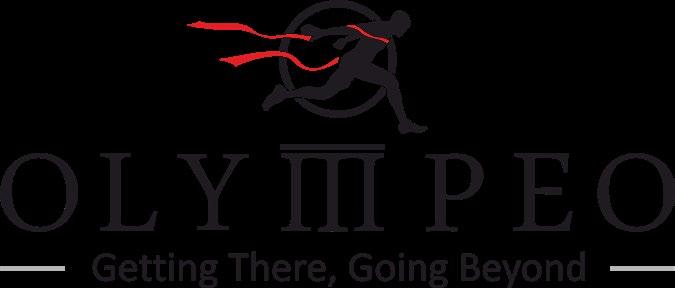
From childhood forts built with blankets to the dream of a white picket fence, the idea of ‘our home’ is deeply ingrained in us. It’s more than just bricks and mortar; it’s where memories are made and lives are lived. Buying a home is one of the most stressful life events, but it’s also one of the deep-seated needs for a place to call our own.
“A house is made of walls
and
beams; a home is built with love and dreams.”


Prabhat Ranjan, CEO, OLYMPEO

The Indian real estate world is dynamic, and best known for its intense competition, evolving customer expectations, and a constant influx of new projects. Real estate developers face the challenge of constructing physical structures as well as building trust, navigating complex regulations, and adapting to shifting market trends.
Ruling this industry is Olympeo, a real estate development firm founded by Prabhat Ranjan. With a background in the real estate sector, Mr. Ranjan looked after a crucial need: providing high-quality homes at affordable prices. This vision to cater to the emotional significance of homeownership led him to establish Olympeo.
His entrepreneurial journey, marked by both successes and significant challenges—including economic shifts like demonetization, GST implementation, the NBFC crisis, and
the COVID-19 pandemic—has instilled in him a strong sense of resilience and a focus on long-term strategic thinking. As a business leader, he champions transparency, functionality in design, and a commitment to exceeding customer expectations.
Olympeo is known for its thoughtful planning and meticulous execution. The company uses natural elements and open spaces in its projects, for best space utilization, natural ventilation, and optimal lighting. The company is now moving from affordable housing to service-oriented real estate, like bungalow projects, resort developments (like the Olympeo Retreat project in Karjat), and senior living communities, to provide comprehensive management and support for these properties.
In the spotlight is founder Prabhat Ranjan, CEO of Olympeo, in an interview in our prestigious “India’s Highly Regarded Real Estate Developer Firm to Watch Out-2025” edition.

Learn from his insights and valuable lessons to make it the best company. Stay tuned.
Prime Insights: What motivated you to establish your real estate development firm, and what vision drives your journey?
My background is in real estate development, and I previously worked in real estate. I realized that this sector is crucial for both the economy and individuals. People often buy homes once or twice in their lifetime, making it a very emotional purchase. I felt there was an opportunity to provide highquality homes at reasonable prices. With a vision to deliver good quality housing at a good value, we started our journey.
Prime Insights: Could you share some of the initial challenges you faced while entering the real estate development sector?
Real estate development is a unique journey with its own set of challenges. From land acquisition to getting permission, it is complex and time-consuming, mostly dependent on external factors like government agencies and stakeholders. Additionally, the market has changed in the past decade, making customer expectations more sophisticated. Execution remains another challenge as this sector is manpowerintensive and depends on numerous low-skilled stakeholders.
Prime Insights: How do you differentiate your brand as a real estate developer in the competitive market? What makes it unique?
We focus on thoughtful planning and execution. For instance, we use open spaces and natural elements for minimal disturbance to the site’s beauty. Functionality is key—our designs have natural ventilation, lighting, and proper space utilization. We also collaborate with experienced stakeholders to make sure the highest quality standards are met during execution. This focus on excellence and functionality sets us apart.
Prime Insights: How does your brand establish and uphold trust among your clients and stakeholders as a real estate developer?
Transparency is at the core of our operations. Even before RERA came into existence, we shared detailed project updates, including monthly construction progress reports. Our open office culture makes sure every department is wellinformed, which helps our team confidently look after client problems. This communication builds trust in clients and stakeholders.
Prime Insights: Are there any new categories, or expansions planned for 2025 in your development projects?
Yes, 2025 marks a significant pivot for our company. We’re shifting from affordable housing to service-oriented real
estate development. Our focus areas include bungalow projects and resort developments, where we build and manage these properties, ensuring long-term value for buyers. We’re also venturing into senior living projects, which is a highly service-driven sector. We believe that senior living has immense potential and are committed to providing comprehensive management and support for these communities.
Prime Insights: What’s the first impression you want customers to have of your real estate developer brand?
We want customers to see us as a trustworthy brand providing premium developments that combine luxury and convenience with a value buy proposition. Professionalism, credibility, and a solid track record are values we have, and we aim to partner with associates who share these principles.
Prime Insights: What has your journey as a real estate developer and entrepreneur been like so far?
It has been a rollercoaster ride, full of highs and lows. Initially, things went smoothly, and we saw huge success in sales and construction. However, external factors like demonetization, GST, and the NBFC crisis, followed by COVID-19, posed major challenges. These experiences taught me resilience and the importance of long-term thinking. Entrepreneurship has been a fulfilling journey, strengthening me emotionally and mentally.
Prime Insights: What are your future goals for the company as a developer for growth, innovation, and market presence?
Our focus is on service-based real estate. Innovation drives us—we’ve always ventured into areas with untapped potential, such as affordable housing and now senior living. Our senior living projects are among the largest in India, showcasing our commitment to pioneering developments. We’re also working on a destination resort in Karjat as part of our Olympeo Retreat project. Through product and service innovation, we aim to set new benchmarks in the industry.
Prime Insights: What advice would you offer to aspiring real estate developers and entrepreneurs in the industry?
Enter this industry with open eyes. While the sector provides great opportunities, it is capital-intensive and requires longterm planning. Developers should make sure they have adequate financial backing and realistic timelines to avoid stress. Real estate is a noble sector—customers interact with you during some of the happiest moments of their lives, and this sector provides an immense opportunity to create an everlasting legacy. As Peter Drucker says, ‘The best way to predict the future is to create it.’
Investing in luxury real estate is not just a financial move; it’s a statement of prestige and a pathway to significant wealth accumulation. The elite class has long recognized the advantages of owning luxury properties, using them not just as places of residence but also as high-yield investments. However, navigating this market requires insider knowledge and an understanding of how the wealthy operate in this space. Let’s dive into the secrets of the elite when it comes to luxury real estate investing and how you can capitalize on this lucrative market.
To invest successfully in luxury real estate, you need to first understand what sets these properties apart from standard real estate. It’s not just about price, although luxury homes often come with hefty price tags. Location, exclusivity, and amenities are crucial factors that define these homes. They are typically found in prestigious areas, offer privacy, high-end features, and are often custom-built to meet the desires of affluent buyers.
The elite invest in luxury real estate because it provides a unique combination of financial security and personal enjoyment. Unlike stocks, bonds, or other traditional investments, luxury properties can serve as a personal retreat while appreciating in value. Additionally, these properties tend to perform well in times of market volatility, making them a relatively safe investment.
In real estate, location is king, and this is especially true in the luxury segment. The elite typically seek out properties in exclusive areas that boast proximity to amenities like high-end shopping, top-rated schools, and entertainment options. Additionally, natural beauty—think oceanfront, mountain views, or lush countryside—plays a key role in boosting the value of luxury real estate.
Just like in any other type of investment, timing plays a crucial role in luxury real estate. While the luxury market tends to be more resilient, there are still periods when prices can dip due to global economic factors. The elite often wait for the perfect moment to purchase—either during a market downturn or when a unique opportunity arises, like a distressed sale.
Another secret of the elite is their willingness to diversify their luxury real estate portfolios internationally. By owning properties in different countries, they hedge against local market downturns and currency fluctuations. For instance, if the U.S. real estate market is slow, owning properties in booming markets like Singapore, Dubai, or Hong Kong can provide a steady stream of income and capital appreciation.

One of the best-kept secrets of the wealthy is the world of offmarket deals—transactions that never make it to public listings. These are often highly exclusive opportunities where only a select few buyers are aware of the property being sold. Off-market properties often offer better pricing and more privacy, which is highly valued among elite investors.
While many assume that the ultra-wealthy purchase homes outright, the reality is that they often use leverage to their advantage. Taking out loans, even at lower interest rates, allows them to free up capital for other investments. For instance, instead of sinking $10 million into a luxury property, they may use a fraction of that for a down payment and finance the rest, allowing them to use the remaining cash in other lucrative ventures.
The rich often take full advantage of the tax benefits associated with real estate investments. Many countries offer tax incentives, such as deductions for mortgage interest, property taxes, and depreciation on investment properties. In some cases, savvy investors can reduce their taxable income significantly, allowing them to retain more of their wealth.
One of the strategies elite investors use to maximize the income potential of their luxury real estate is turning them into shortterm rentals. Properties in sought-after vacation destinations, such as Hawaii, Aspen, or the French Riviera, can command top dollar when rented out on a short-term basis. This can result in a steady stream of income while the property appreciates in value.
While the elite may have a natural instinct for luxury real estate, they also rely heavily on professional guidance. This includes working with real estate agents who specialize in high-end properties, lawyers familiar with real estate law, and financial advisors who understand the nuances of real estate investments. These professionals help investors navigate legal complexities, tax issues, and market trends, ensuring that their investments are as profitable as possible.
Investing in luxury real estate is a complex yet rewarding endeavor. The elite have mastered the art of navigating this market by focusing on location, leveraging off-market deals, timing their purchases, and diversifying their portfolios. By following these strategies and working with experienced professionals, you too can tap into the lucrative world of luxury real estate and build lasting wealth.















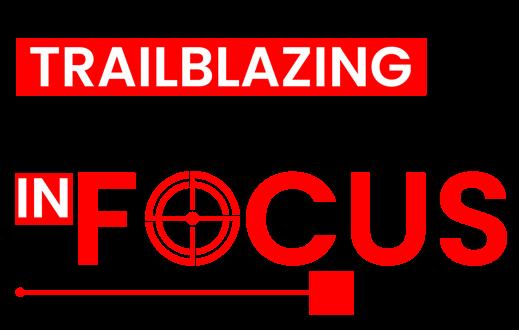
Did you know that a website’s loading speed can make or break a business in today’s digital world? Companies are constantly racing to innovate and offer cutting-edge solutions in the fast-paced IT industry, where milliseconds matter. Staying ahead requires an understanding of changing customer needs, technological advancements, and the ability to adapt quickly to market shifts. Panzer is a fast-growing IT company situated in Hyderabad and founded by Rizwan Khan, founder & director and Kawaljeett Singh Hora, director. Their entrepreneurial journey is a testament to their passion for innovation and dedication to helping businesses thrive in the digital age. Panzer has become a trusted partner for businesses wanting IT staffing solutions, modern website design, cutting-edge app development, and digital marketing strategies.
Panzer’s comprehensive suite of services is made to help businesses at every stage of their digital transformation. From connecting companies with the right IT talent to crafting effective digital marketing campaigns, Panzer offers end-to-end solutions tailored to specific client requirements. Their approach is rooted in innovation and a commitment to excellence, leveraging the latest technologies and industry best practices to deliver high-quality results.
In the spotlight are founder Mr. Rizwan Khan, founder & director and Mr. Kawaljeett Singh Hora, director in an interview featured in our prestigious “Trailblazing Company in Focus 2025” edition. Learn from their insights and valuable lessons to excel and build a bestin-class company. Stay tuned.

Rizwan Khan Founder & Director
Prime Insights: Tell us about your company and its mission.
At Panzer, we’re a fast-growing IT company located in Hyderabad. We’re passionate about helping businesses succeed in the digital age, and we do that with our services. We specialize in IT staffing, so we can connect companies with the talent they need to succeed. We also build modern, effective websites, develop cutting-edge apps, and create smart digital marketing strategies.
My team and I are dedicated to providing high-quality solutions that give results to our clients. We’re not just building websites or running marketing campaigns; we’re building partnerships to help businesses grow.
“We empower businesses to thrive in the digital age. We do this by providing innovative IT solutions, always putting our clients first, and constantly adapting to the ever-evolving tech landscape.”
Kawaljeett Singh Hora Director

Prime Insights: What inspired the foundation of your company, and how has the journey been over the years?
Panzer’s story started with a powerful idea: to help businesses navigate and thrive in the digital world. We started with IT staffing, for the crucial need of skilled professionals. Soon, we realized that our clients needed more than just talent; they needed a comprehensive digital strategy. So, we included website design, app development, and digital marketing. Our core philosophy has always been clientfirst. We provide not only top-tier talent but also advanced digital services that help businesses to succeed online.
Prime Insights: How does your company do innovation and improvement?
At Panzer, we focus on innovation with creativity, teamwork, and staying ahead of trends. We believe in collaboration,


continuous learning, and usage of the latest tools. We look after client needs and create customized solutions with AI and automation.
Prime Insights: What strategies have you used to build your brand as a leader in the industry?
We value our clients by building trust and long-term relationships. We stay ahead by using new technology, investing in our skilled team, and implementing strong marketing strategies. Sharing industry insights builds our credibility, while reliable support and on-time delivery look after customer success and satisfaction.
Prime Insights: How do you see your industry evolving in the coming years, and how is your company preparing for it?
We’re preparing for the future by using new technologies like AI, machine learning, and automation to provide even smarter solutions. We also invest in upskilling our team with regular training and keeping them updated on the latest tools and trends. We are focused on innovation and we’re constantly aiming to create customized solutions that meet our clients’ changing needs.
Prime Insights: How does your company make sure of customer satisfaction and build long-term relationships?
Panzer focuses on customer satisfaction by knowing client needs and creating custom solutions. We keep open communication, provide quality work on time, and make sure solutions fulfill business goals.
We value feedback, quickly solve issues, and build long-term partnerships by helping the client grow and celebrating their success.
“We believe in building partnerships, not just websites, and delivering real results, not just campaigns.”
Prime Insights: How does your company contribute to social responsibility and community development?
We give back to our communities with our CSR initiatives. We work on improving rural areas by supporting projects that build safe homes, provide clean water systems, and develop better infrastructure. We do food drives, support educational programs, and invest in eco-friendly projects. Our employees volunteer their time and skills in health programs and medical camps.
Prime Insights: What are the key goals and plans your company has set for 2025?
We’ve set ambitious goals for 2025. Our focus is on growth, continued innovation, and strategic market expansion. We want to be a top IT services provider, all while excelling in customer satisfaction and staying at the forefront of technological advancements.
Prime Insights: How does your leadership team inspire innovation and excellence within the organization?
Our leadership team makes Panzer what it is. We believe in setting clear, ambitious goals, not just for the company, but for every individual within it. We are full of creativity because we know that’s where the real magic happens. Most importantly, we lead by example. We’re not asking our team to do anything we wouldn’t do ourselves. We’re not just keeping up with technological advancements and industry trends—we’re setting them.
Prime Insights: What measures have you implemented to create an inclusive and dynamic workplace culture?
We’ve worked hard to create a friendly, inclusive workplace where everyone feels valued and respected. We believe in the power of diversity and actively recruit individuals from all backgrounds. We’re also passionate about supporting women in leadership roles. We understand work-life balance and provide flexible work arrangements and comprehensive wellness programs. We also look after the growth of our employees and provide ample opportunities for career advancement.
Teamwork, innovation, and open communication are at the core of our culture. We look after the safety, fairness, and social responsibility needed for a positive and productive work environment.
Prime Insights: What advice would you give to new businesses wanting to become industry trailblazers?
Emerging businesses should focus on innovation, customer needs, and strong digital presence to become leaders. Provide unique products, improve, and get customer feedback. Build a user-friendly website, use SEO, and engage on social media. Hire talented people and make smart, data-driven decisions.
Prime Insights: How does your company stay ahead of industry trends and adapt to market shifts?
At Panzer, we focus on learning and innovation. We engage with industry leaders, attend conferences, and train our team. By working closely with clients, we adapt our solutions to fulfill changing needs for longterm success in a fast-paced digital world.

In today’s digital age, businesses are constantly seeking ways to stay ahead of the curve and drive growth. One of the most effective strategies they turn to is IT consulting.
But what exactly is IT consulting, and how can it fuel business expansion? Let’s delve into the world of IT consulting and uncover how it can propel your business to new heights.
Before we explore its impact on business growth, let’s grasp the essence of IT consulting. IT consulting involves seeking advice and guidance from experts in the field of information technology to optimize your business operations. These consultants bring a wealth of knowledge and experience to the table, helping businesses harness the power of technology to achieve their goals.
In today’s fast-paced business environment, efficiency is key. IT consulting firms specialize in identifying inefficiencies within your current systems and processes. By leveraging cutting-edge technological solutions, they streamline operations, automate

repetitive tasks, and eliminate bottlenecks. This not only saves time and resources but also enhances overall productivity.
With the increasing prevalence of cyber threats, safeguarding sensitive data has never been more critical. IT consulting firms play a vital role in strengthening cybersecurity measures to protect your business from potential breaches. From implementing robust firewalls to conducting regular security audits, these experts ensure that your digital assets remain safe and secure.
In the age of big data, the ability to extract actionable insights from vast amounts of information is invaluable. IT consulting firms excel in data analytics, helping businesses make informed decisions based on real-time data. Whether it’s identifying market trends, predicting customer behavior, or optimizing pricing strategies, data-driven insights pave the way for smarter business decisions.

As businesses evolve and grow, scalability becomes paramount. IT consulting firms design scalable solutions that can adapt to your changing needs and accommodate future growth. Whether you’re expanding into new markets, adding new products or services, or ramping up your workforce, these flexible IT solutions ensure that your technology infrastructure can scale alongside your business.
In today’s hyper-competitive landscape, innovation is the key to staying ahead of the curve. IT consulting firms help businesses harness the latest technologies to drive innovation and gain a competitive edge. Whether it’s implementing AI-powered chatbots to enhance customer service or leveraging cloud computing to improve collaboration, embracing innovation is essential for longterm success.
In recent years, the rise of remote work has transformed the way businesses operate. IT consulting firms play a crucial role in empowering remote workforce by providing the necessary tools and technologies for seamless collaboration and communication. From cloud-based collaboration platforms to virtual private networks (VPNs), these solutions enable employees to work efficiently from anywhere in the world, driving productivity and flexibility.
In today’s digital-first world, providing exceptional customer experience is paramount. IT consulting firms help businesses optimize customer experience by implementing tailored solutions such as customer relationship management (CRM) systems, personalized marketing automation, and omnichannel support platforms. By understanding customer needs and preferences, businesses can deliver personalized experiences that foster loyalty and drive revenue growth.
Managing IT infrastructure can be a costly endeavor for businesses, especially smaller enterprises with limited resources. IT consulting firms offer cost-effective solutions to reduce IT costs and overheads while maximizing efficiency and performance. Whether it’s migrating to cloudbased services, outsourcing IT support, or implementing virtualization technologies, these strategies enable businesses to minimize expenses without compromising on quality.
In an increasingly complex regulatory landscape, compliance is non-negotiable for businesses across industries. IT consulting firms specialize in ensuring regulatory compliance by implementing robust security
measures, data encryption protocols, and access controls to protect sensitive information. By staying abreast of regulatory changes and industry standards, businesses can mitigate risks and avoid costly penalties, fostering trust and credibility among stakeholders.
Collaboration is key to success in today’s interconnected business ecosystem. IT consulting firms serve as strategic partners, collaborating with businesses to achieve their objectives and overcome challenges. Whether it’s providing ongoing support and maintenance or offering strategic guidance on technology investments, these partnerships foster mutual trust and collaboration, driving long-term growth and success.
In the digital age, adaptability is essential for survival. IT consulting firms help businesses embrace digital transformation by leveraging emerging technologies such as artificial intelligence (AI), machine learning (ML), and Internet of Things (IoT) to innovate and stay ahead of the curve. By embracing digital transformation, businesses can unlock new opportunities, streamline operations, and drive sustainable growth in today’s rapidly evolving marketplace.
In conclusion, IT consulting is not just a service; it’s a strategic investment in the future of your business. From empowering remote workforce and optimizing customer experience to reducing IT costs and ensuring regulatory compliance, the benefits of IT consulting are manifold. By partnering with a reputable IT consulting firm, businesses can leverage technology to drive growth, innovation, and success in today’s dynamic business landscape.


Revolutionizing Data Analytics with Cutting-Edge Innovation and Narendran Selvan’s Vision for Data-Driven Success of Businesses
Did you know that the average person generates more than 2.5 quintillion bytes of data every day? That’s a lot of information waiting to be unlocked!
The data analytics landscape has undergone a seismic shift in recent years, with organizations across industries recognizing the transformative power of data-driven insights. The competition in this field is intense, as companies vie to provide innovative solutions that help businesses extract maximum value from their data.
Locuz Enterprise Solutions Pvt. Ltd. has come up as a leader in this industry. Founded in [1999], LOCUZ is a technology-driven company that specializes in providing comprehensive data analytics solutions. LOCUZ helps organizations uncover the hidden narratives within their data, revealing valuable insights to make informed decisions that drive innovation and growth.
At the helm of LOCUZ is Narendran Selvan, Practice Lead, Data & AI. With a wealth of experience in the data analytics domain, Narendran has played an important role in shaping the company’s vision and driving its success. His expertise in using advanced technologies, coupled with his passion for innovation, has positioned LOCUZ as a trusted partner for businesses seeking to harness the potential of their data. They deliver customized solutions that drive efficiency, improve decision-making, and enhance overall performance.
The visionary leader, Narendran Selvan. Learn from his insights and valuable lessons as an entrepreneur to excel in your own endeavours and make a lasting impact.
Prime Insights: How did your company become a leader in providing data analytics services, and how has your vision for the company evolved over time?
Locuz has established itself as a leader by developing comprehensive data and analytics platforms that cover everything from data engineering to advanced data sharing. Our partnerships with Snowflake and AWS have empowered us to simplify data management, eliminate data silos, and drive digital transformation. We have evolved to focus on delivering smarter, faster insights through generative AI and data modernization solutions, resulting in improved business outcomes.
Prime Insights: Can you describe the most significant challenges you encountered in the early stages of your business and the strategies you have used to overcome them? In the early stages, we faced challenges in persuading enterprises to transition from legacy systems to modern cloud and data platforms. Our strategy was to demonstrate immediate business value by emphasizing


scalable data engineering, secure data lakes, and integrated analytics. This approach provided a clear path for modernization while minimizing operational complexities.
Prime Insights: In the competitive data analytics market, how does your brand cultivate and maintain trust with clients? What unique practices or principles set you apart? We built trust by providing holistic data platforms that look after security, scalability, and operational simplicity. With Snowflake and Amazon Redshift’s secure, compliant, cloud-native solutions, combined with our expertise in data governance and modernization, we help clients transition from being data-limited to fully data-driven. Our ability to deliver measurable business value sets us apart in the market.

Prime Insights: What metrics or feedback mechanisms do you use to assess and enhance the level of trust consumers place in your brand?
To build and maintain trust, we collaborate with our clients through a programmatic approach to data management. We ensure that our clients fully realize the benefits of data in motion without experiencing cost overruns, by monitoring cloud usage and expenses. This proactive strategy, combined with customer feedback and real-time performance metrics, helps us uphold transparency and trust in our services.
Prime Insights: What are your flagship services or solutions in the data analytics space, and how do they differentiate you from competitors?
Our flagship services include building data lakes powered by AWS and Snowflake, as well as developing data science platforms and AI-driven analytics solutions. What sets us apart is our ability to integrate these services into a unified data platform, facilitating seamless data sharing, secure pipelines, and uninterrupted analytics, all while eliminating data silos. This integration allows our clients to make data-driven decisions more easily.
Prime Insights: With the rapid advancements in data technology, how does your company stay ahead of industry trends and continuously innovate your offerings?
We drive innovation by continually advancing our generative AI and data science capabilities, leveraging Snowflake’s scalable, cloud-native architecture. Our strategic partnerships with AWS and Snowflake help us to stay at the forefront of advancements in cloud computing, data engineering, and real-time analytics. We also focus on simplifying infrastructure to improve business value, prioritizing impactful outcomes over engineering complexity.
Prime Insights: In an era marked by heightened data privacy concerns, how have consumer expectations of data analytics companies changed, and how is your company adapting to these shifts?
Clients now expect robust security and governance in all data handling processes. We have adapted by ensuring that our platforms—whether for data lakes, data warehouses, or data sharing—are fully compliant, with encryption, access control, and identity management integrated from the outset. Our strategic partnerships makes sure that we remain compliant with evolving global standards.
Prime Insights: How do you foster long-term relationships with your clients beyond transactional interactions? Can you share examples of how you’ve turned clients into brand advocates?
Our ability to deliver value beyond the initial engagement is what fosters long-term relationships. Clients, such as those we’ve assisted in modernizing their data warehouses with Snowflake, have expanded their projects to explore AI-driven data science, resulting in deeper partnerships. Our proactive approach to continuous value delivery frequently transforms clients into advocates.
Prime Insights: What key milestones or achievements have solidified your company’s position as a leader in the data analytics industry?
Key achievements include assisting organizations in transitioning from traditional Enterprise Data Warehouses (EDWs) to cloudnative data lakes and integrating AI solutions to deliver predictive insights. Our partnerships with Snowflake and AWS, along with our
successful national-scale High-Performance Computing (HPC) projects, have solidified our leadership in the data analytics domain, particularly within renewable energy, financial services, manufacturing, healthcare, and retail sectors.
Prime Insights- What are your long-term goals for the company over the next 3-5 years, how do you plan to achieve them within the changing data analytics landscape?
Our goal is to advance our generative AI capabilities and expand our data modernization services globally. We aim to become a leader in data-driven transformation by using our established partnerships with AWS and Snowflake, combined with our robust technical expertise and seamless integration with AI ecosystems.
Prime Insights: How do you envision your company influencing the broader data analytics industry and contributing to its future direction?
Locuz aims to influence the industry by promoting securityled, data-driven intelligence that integrates data engineering, analytics, and AI in a secure, scalable, and efficient manner. Our expertise in data modernization and generative AI will assist businesses in transitioning to a fully data-driven approach, setting new benchmarks in performance and business intelligence.
Prime Insights- Can you share key lessons from your journey as an entrepreneur in the data analytics field that have shaped your leadership and business strategies?
A key lesson is the importance of agility and the ability to rapidly adopt new technologies. Our two-decade legacy in building large-scale computing clusters, combined with our seasoned partnerships with Snowflake and AWS, has underscored the value of cloud-native platforms. We have strengthened client relationships and continuously delivered innovative solutions, by focusing on reducing complexity.
Prime Insights- What personal and professional milestones do you aim to achieve in the next year, and how do they align with your company’s objectives? Personally, I aim to deepen my understanding of AI and data science to stay ahead of the curve. Professionally, I will focus on scaling Locuz’s generative AI and data analytics solutions, aligning with our goal to enable enterprises to achieve more intelligent, data-driven decision-making.
Prime Insights: What pivotal advice would you offer to aspiring entrepreneurs looking to make their mark in the data analytics industry?
My advice is to focus on delivering solutions that address real business challenges, not just technical issues. Leverage partnerships with cloud-native platforms such as AWS, GCP, Azure, and Snowflake. Prioritize delivering immediate, measurable business value through scalable and secure data solutions.
Prime Insights- We value your insights deeply. Please share any additional thoughts, experiences, or suggestions that could inspire and inform our audience. The future of data analytics lies in integrating AI, cloud computing, and real-time data sharing. Businesses that embrace this transformation by leveraging platforms like Snowflake will be positioned to stay ahead, driving continuous innovation and making smarter decisions.

In today’s fast-paced business world, staying ahead of the competition is more important than ever. Data analytics offers a powerful tool for business owners and decision-makers to make informed predictions about the future. But how can you use data analytics to shape the future of your business? Let’s dive into the details.
Before we explore how data analytics can help you predict the future of your business, it’s essential to understand what it is. Data analytics involves collecting, organizing, and analyzing vast amounts of data to identify patterns and trends. These insights allow companies to make data-driven decisions that increase their chances of success.
Data analytics can be broken down into four main types:
1. Descriptive Analytics – What happened?
2. Diagnostic Analytics – Why did it happen?
3. Predictive Analytics – What will happen?
4. Prescriptive Analytics – What should be done?
In this article, we’ll focus on predictive analytics, which uses historical data to forecast future trends.
Predictive analytics is particularly valuable for businesses looking to stay ahead of market trends. By analyzing past performance and customer behavior, you can forecast future events, enabling you to make proactive decisions. This approach helps in several areas, such as:
• Improved marketing strategies: Understanding which campaigns are likely to succeed based on past data.
• Enhanced customer satisfaction: Predicting customer needs and offering tailored solutions.
• Optimized supply chain: Forecasting demand and managing inventory more efficiently.
The rise of big data has revolutionized the field of data analytics. Companies now have access to more information than ever before, from customer feedback to market trends. The sheer volume of data allows for more accurate predictions, which can help businesses better prepare for future challenges and opportunities.
To leverage the full potential of data analytics, businesses need the right tools. Some of the most popular data analytics tools include:
• Google Analytics: Great for website traffic analysis.
• Tableau: A powerful tool for data visualization.
• Microsoft Power BI: Offers easy integration with other Microsoft products.
• R and Python: Popular programming languages for data manipulation and analysis.
To predict the future of your business using data analytics, you need to track specific metrics that are relevant to your industry. Here are some common metrics:
• Customer lifetime value (CLV)
• Customer churn rate
• Sales performance
• Market trends
These metrics help provide a clear picture of how your business is performing and what changes might be on the horizon.
Once you have the right data and tools in place, it’s time to start making data-driven decisions. This process involves using the insights gained from data analytics to make informed choices about your company’s future direction. Whether it’s launching a new product or entering a new market, data can help you reduce risk and make smarter decisions.
While predictive analytics offers immense potential, it’s not without its challenges. One of the most significant hurdles is data quality. If the data being analyzed is incomplete or inaccurate, it can lead to faulty predictions. Another challenge is the need for skilled personnel who understand both data science and the specific business context.
The world of business is constantly changing, and so is your data. That’s why it’s crucial to continuously monitor and analyze your data to stay up-to-date with evolving trends. Regularly updating your models and assumptions will help you maintain the accuracy of your predictions.
As businesses continue to adopt AI and machine learning, the future of data analytics is looking brighter than ever. These advanced technologies are making it easier to analyze vast amounts of data in real time, providing even more accurate and timely predictions. Companies that embrace these innovations will have a significant advantage over their competitors.
In today’s competitive market, using data analytics to predict the future of your business is no longer optional—it’s a necessity. By leveraging predictive analytics, you can make informed decisions, improve customer satisfaction, and stay ahead of the curve. Start by gathering the right data, investing in the right tools, and continuously refining your approach to ensure long-term success.



Education in India by
The e-learning industry is booming, offering students a flexible and convenient way to learn. However, a significant gap exists for students who prefer to learn in their native languages. Meet Gyansrota, a brainchild Was established in 1998 as a division of ACI Pvt Ltd. ACI was remaned to ASCOSYS in 2018.
Mondeep Sarma, a passionate entrepreneur with over 25 years of experience in technology, saw a need for regional language e-learning solutions. Driven by this vision, he created Gyansrota, aiming to bridge the educational divide and empower learners across India.
Gyansrota offers a comprehensive e-learning platform for K12 students. They have experience in serving more than 2.40 lakh students with content prepared in 4 different languages for students from classes 9 to 12 in both online and preloaded mode. Their unique value proposition lies in catering to students in 9 languages, covering 14 boards, with plans to expand to all boards and 26 languages!
Their content goes beyond just video lectures. Gyansrota provides downloadable eBooks aligned with school syllabi, question banks, and practice apps for mathematics, English grammar, and spoken English, all designed to create a holistic learning experience. We started another app in the name of Gyansrota Entrance, which was Gyansrota NEET at the time of launching, which provides coaching for NEET free of charge.
But Gyansrota is more than just features. They prioritize building trust with their users. They offer pre-loaded content, eliminating concerns about missed live classes or internet connectivity issues. Additionally, they actively address user concerns and provide value-added services like free live classes and crash courses.
Mr. Sarma will share his entrepreneurial journey, the challenges he faced, and the valuable lessons learned. Are you curious to learn how Gyansrota is revolutionizing education and empowering students throughout India? Stay Tuned!
Prime Insights: Kindly give us a brief about the company’s inception story.
It all began over 25 years ago with a passion for technology. We started by building websites and software, then branched out to mobile apps and IT training for businesses and government agencies.
In 2012, we saw a gap in the social media landscape. One of our proudest moments was building one of the first regional language social networking sites in India, featured in Hindustan Times!

Mondeep Sarma Director
Our expertise extends beyond websites. We can create regional language eBooks, with hundreds already under our belt—some even on Google Books.
But technology isn’t just about business for us. We’re working with the Bodo Sahitya Sabha to digitally preserve and revitalize the Bodo language and culture through a project called E-thunlai. It’s a truly unique privilege to contribute to a language’s future.
Now, we’re excited about new platforms like Pujasamogri. com and Neo-Bookman, an innovative space for readers and writers. We’re constantly evolving, using technology to bridge divides and empower communities.
Prime Insights: What was the motivating force behind its inception?
The birth of Gyansrota was driven by a disparity in the e-learning landscape. In 2018, I noticed a gap: most students preferred to learn in their regional languages, yet the market was filled with English-medium courses. Existing platforms

offered generic content at exorbitant costs, often requiring constant internet connectivity. This created an uneven playing field, excluding many potential learners.
Gyansrota was born out of a desire to bridge this divide. Our mission was clear: to make quality education accessible to all, regardless of language, location, or financial constraints. By offering locally relevant content, affordable pricing, and offline accessibility, we aimed to democratize education and empower learners across the country. Preloaded/downloadable content helped students study as per their own convenience.
Prime Insights: What were the initial challenges faced by your business?
Our initial journey was fraught with challenges. Due to some change in technology, we had to shift from only preloaded content to an online version. This shift delayed the full rollout by 2 years.
During the pandemic, the mushrooming of edutech companies providing poor quality content created a mistrust in the market. False promises, failure to provide online classes on time, and, as promised, adding to the same. Even a few big players contributed to it. Additionally, reaching the students in tire 3 towns and in rural areas was a big problem for us as it was large, scattered, and digital penetration was low.
Prime Insights: How is the brand defining the “trust factor” in the market?
We never make false promises. We say what we offer and how it can help students, but we never make any promise on the impact of our courses on the result.
We provide the complete course we offer in preloaded mode at the time of purchase. So no issue like failing to provide live classes or students missing them does not arise. Like purchasing a book, you get what you have paid for at the time of purchase.
We have mechanisms to address very small issues that may be important for users.
We offer more than what we promise. Free live classes for subscribers, crash courses, additional question papers, etc. are common practices that are helping us to get the trust of the students. Most importantly, we are available to address any issue of our audience.
Prime Insights: What services does the brand offer to its clients?
Presently, we are offering classes to
• Classes 9 & 10: Assam Board (English, Assamese, Bodo, Bengali), Maharashtra Board (Marathi), CBSE (English)
• Classes 11 & 12: Science stream
• Kindergarten: English And Assamese medium too
Our course components are:
• eBooks aligned with school syllabus
• Video lectures
• Model question papers and answers
• MCQ practice app
• Mathematics learning app
• English grammar app
• Spoken English (regional to English)
• Bilingual dictionaries
• Free downloadable content
Prime Insights: How does the brand evaluate the value of a customer?
As the brand is dealing with one of the most vital components of some’s life—education, our constant focus is to provide value to a customer.
Assessing how personalized learning paths and adaptive learning technologies affect user engagement and satisfaction. Continuously evaluating and updating the content to ensure it meets the users’ needs and keeps them engaged.
Implementing programs to help users achieve their learning goals, thereby increasing satisfaction and retention. Building and nurturing a community around the platform to enhance user experience and loyalty. Gyansrota community in website and app, Facebook pages in local languages, etc. are helping to develop the Gyansrota community.
Offering rewards for milestones, referrals, and active participation to encourage continued use and advocacy. Online quizzes and contests are helping us in this regard. Our app has an inbuilt link to the quiz part, which is a regular feature.
Prime Insights: How well are the clients connected with the brand?
Gyansrota maintains strong client relationships. Our products are integral to a student’s learning journey, requiring continuous engagement. This fosters a deeper connection between our brand and our users.
Prime Insights: What are the most effective marketing initiatives or programs the brand has used to promote its initiatives, offerings, or services?
Social media, particularly Facebook, has been our primary marketing tool. Its wide reach and cost-efficiency have allowed us to connect effectively with our target audience.
Prime Insights: Are there any new categories or changes to be introduced this year?
Yes, we’ve expanded our offerings this year. We’ve introduced new categories focused on job information and competitive exams. These additions complement our existing educational content and aim to provide a comprehensive platform for students and professionals.
Prime Insights: What’s the first thing that enters a consumer’s mind when they see your brand?
When people think of Gyansrota, I want them to instantly connect it with knowledge. We’re more than just an e-learning platform; we’re a trusted source of information and learning. We’ve worked hard to position our brand as a synonym for knowledge accessibility and quality education.
Prime Insights: What targets and plans are to be achieved in the coming years?
We plan to grow Gyansrota by offering classes for more subjects and in different languages. We want to reach more students and help them learn better.
Prime Insights: What message does the company give to the young entrepreneurs reading this draft?
Young entrepreneurs should think outside the box to bring fresh, innovative ideas to the table. They should continuously learn, adapt, and evolve in a rapidly changing business environment. They should build a strong network and collaborate with others to achieve mutual success. They should maintain integrity, ethical practices, and social responsibility in business dealings. They should pursue their passions with a clear vision and dedication.

Education is undergoing a significant transformation in the 21st century. As we embrace new technologies and pedagogical approaches, the landscape of learning is evolving at a rapid pace. The need to adapt to these changes is paramount for educators, students, and institutions alike. This article explores ten innovative education trends that are shaping the future of learning, offering insights into how these trends are revolutionizing education.
Personalized learning is an educational approach tailored to meet the individual needs, skills, and interests of each student. This trend leverages technology to provide customized educational experiences, enabling students to learn at their own pace. By focusing on the unique learning styles and preferences of each student, personalized learning helps to maximize engagement and retention.
Benefits of Personalized Learning
• Increased Engagement: Students are more likely to stay engaged when learning materials align with their interests and abilities.
• Better Outcomes: Customized learning paths can lead to improved academic performance.
• Flexibility: Students can progress at their own pace, ensuring they fully understand a concept before moving on.
2. Blended Learning
Blended learning combines traditional face-to-face classroom methods with online educational materials and activities. This hybrid approach offers the best of both worlds, allowing students to benefit from the structure of in-person instruction while also taking advantage of the flexibility and resources available online.
Key Components of Blended Learning
• Online Resources: Incorporating digital tools and resources to supplement traditional teaching methods.
• Face-to-Face Interaction: Maintaining the essential personal connection between teachers and students.
• Self-Paced Learning: Allowing students to access materials and complete assignments at their own pace.
3. Gamification
Gamification involves integrating game design elements into the learning process to make education more engaging and fun. This trend leverages the motivational aspects of games to encourage students to participate actively in their learning journey.
How Gamification Enhances Learning
• Increased Motivation: Game elements like points, badges, and leaderboards motivate students to complete tasks and improve their performance.
• Active Learning: Interactive and game-based activities promote active participation and critical thinking.
• Immediate Feedback: Games provide instant feedback, helping students understand their progress and areas for improvement.
4. Artificial Intelligence (AI) in Education
Artificial Intelligence (AI) is transforming education by providing intelligent systems that can adapt to individual learning needs. AI-powered tools and applications are being used to enhance various aspects of the educational experience, from personalized tutoring to automated grading.
• Personalized Tutoring: AI-driven tutors can provide customized support and resources based on each student’s learning progress.
• Automated Grading: AI can streamline the grading process, providing quick and accurate feedback on assignments and exams.
• Data Analytics: AI can analyze large amounts of educational data to identify trends and insights, helping educators make informed decisions.
5. Augmented Reality (AR) and Virtual Reality (VR)
Augmented Reality (AR) and Virtual Reality (VR) are revolutionizing the way students interact with educational content. These technologies create immersive learning experiences that can enhance understanding and retention of complex concepts.

Benefits of AR and VR in Education
• Immersive Learning: AR and VR provide immersive environments where students can explore and interact with content in a realistic way.
• Enhanced Engagement: These technologies can make learning more engaging and enjoyable, capturing students’ attention and interest.
• Practical Applications: AR and VR can simulate real-world scenarios, allowing students to practice skills and apply knowledge in a safe, controlled environment.
6. Collaborative Learning
Collaborative learning emphasizes the importance of social interaction and teamwork in the educational process. This approach encourages students to work together to solve problems, complete projects, and learn from each other.
Advantages of Collaborative Learning
• Improved Social Skills: Working in groups helps students develop communication and teamwork skills.
• Diverse Perspectives: Collaboration exposes students to different viewpoints and approaches, enriching their learning experience.
• Enhanced Problem-Solving: Group work encourages critical thinking and collective problem-solving.
7. Microlearning
Microlearning involves delivering educational content in small, manageable chunks. This approach caters to the shorter attention spans of modern learners and allows for more flexible and focused learning sessions.
Key Features of Microlearning
• Bite-Sized Content: Information is broken down into small, easily digestible pieces.
• Just-in-Time Learning: Students can access specific content when they need it, enhancing retention and application.
• Flexibility: Microlearning can be incorporated into busy schedules, making it ideal for lifelong learning and professional development.
8. Flipped Classroom
The flipped classroom model inverts traditional teaching methods by delivering instructional content online outside of class and using classroom time for interactive activities. This approach encourages active learning and deeper engagement with the material.
How the Flipped Classroom Works
• Online Lectures: Students watch video lectures or access reading materials at home.
• Classroom Activities: In-class time is dedicated to discussions, problem-solving, and hands-on activities.
• Student-Centered Learning: The flipped classroom shifts the focus from teacher-led instruction to student-driven learning.
9. Lifelong Learning
Lifelong learning emphasizes the continuous pursuit of knowledge and skills throughout an individual’s life. In a rapidly changing world, staying updated with new developments and acquiring new competencies is crucial for personal and professional growth.
Promoting Lifelong Learning
• Flexible Learning Opportunities: Offering online courses, workshops, and other resources that can be accessed anytime, anywhere.
• Encouraging Curiosity: Fostering a culture of curiosity and a love for learning in students from an early age.
• Skill Development: Focusing on the development of both soft and hard skills to adapt to changing job markets and industries.
10. Sustainability Education
Sustainability education aims to equip students with the knowledge and skills needed to address environmental challenges and promote sustainable practices. This trend integrates concepts of sustainability into various subjects and encourages critical thinking about ecological issues.
Importance of Sustainability Education
• Environmental Awareness: Educating students about the impact of human activities on the environment.
• Responsible Citizenship: Encouraging students to adopt sustainable practices in their daily lives.
• Interdisciplinary Learning: Integrating sustainability concepts into diverse subjects, from science and geography to economics and social studies.
Conclusion
The future of education is being shaped by innovative trends that leverage technology, promote active and personalized learning, and address the needs of modern students. Personalized learning, blended learning, gamification, AI, AR/VR, collaborative learning, microlearning, the flipped classroom, lifelong learning, and sustainability education are all playing crucial roles in this transformation. As these trends continue to evolve, they offer exciting opportunities to enhance the educational experience and prepare students for the challenges of the future. Embracing these innovations can lead to more effective, engaging, and sustainable education systems worldwide.





The Insurance industry is undergoing a digital transformation. Legacy systems are struggling to keep pace with consumer demands for speed, efficiency, and transparency. In this competitive environment, trust is paramount. But how do companies build and maintain trust in an age of skepticism?
This is where Acess Meditech Private Ltd. (AMTPL) comes in.
Founded by Mr. Syed Aijazuddin, Chief Executive Officer (CEO) and Ms. Nagina Nargis, Director, AMTPL is a premier InsurTech software solution and service provider dedicated to transforming the Insurance industry. They recognized the need for advanced technology solutions in the Middle East, where outdated systems were hindering progress.
AMTPL offers a one-stop ERP solution that leverages AI and data analytics to streamline operations for Insurance companies, Thirdparty administrators (TPAs), Aggregators, and Brokers. Their platform caters to a wide range of Insurance products, including Health, Motor, Group life, Property and Casualty, and boasts a robust Finance and Reinsurance module.
In our exclusive interview with Mr. Aijazuddin and Ms. Nargis, we delve into their journey, the unique aspects of AMTPL, and their vision for the future. We’ll explore how they’ve built a reputation for trust and reliability and gain valuable insights from their experiences as successful business leaders. Stay tuned to learn from their inspiring story and discover the key ingredients for building a thriving business in the ever-evolving InsurTech landscape.
Prime Insights: What inspired you to start your company?
I spent over a decade working in the Middle East before founding my own company. At that time, the Insurance industry in Saudi Arabia was significantly lagging, still reliant on outdated legacy systems. There was a substantial demand for advanced technology to address the market’s needs, reduce dependency on employees, and modernize operations.
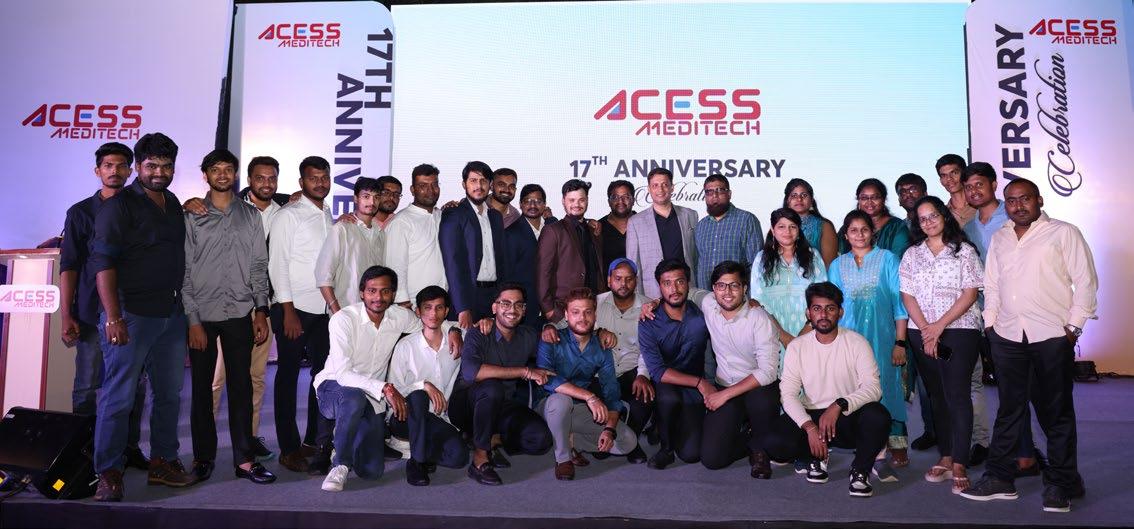

Mr. Syed Aijazuddin Chief Executive Officer
Prime Insights: What were the initial challenges faced by your business?
Launching our venture wasn’t easy. We faced hurdles right off the bat, like building a talented and driven team. Developing the software took a ton of R&D, and creating efficient workflows was tough too. Establishing a strong brand identity and effectively marketing our services was an ongoing battle. But we persevered, and our vision helped us overcome these challenges and pave the way for success.
Prime Insights: To begin, how is your brand-defining “trust” in the market? What stands behind its uniqueness?
Our brand is built on trust. We deliver reliable, highquality services that meet client needs. Transparency, exceptional customer support, and innovative solutions are what set us apart. We further solidify this trust by delivering on our commitments as per the given timelines. This dedication to excellence, personalization, and reliability is what makes us unique.

Prime Insights: What are the offerings (services or solutions) of Acess Meditech Private Ltd.?
Acess Meditech Private Ltd. (AMTPL) is a premier InsureTech software solution and service provider for Insurance companies, third-party administrators (TPAs), Aggregators, and Insurance Brokers. We provide cutting-edge technology and an ERP solution that help the world’s leading insurers innovate, collaborate, and operate with agility and simplicity. AMTPL, appraised as a CMMI Level III company from 2014 to 2016, has its head office in Hyderabad, India, with branches in the UAE and KSA.
We combine digital core analytics and AI to deliver a onestop ERP solution as an in-premises or a cloud service offering a digital Insurance solution platform for services like Health Insurance, motor Insurance, group life, and property and casualty (P&C) with a robust finance and reinsurance module.
Prime Insights: In an age of mistrust, are you seeing an evolution in how consumers trust brands, or are they still, for the most part, doubtful?
In this age of mistrust, there has been a noticeable evolution in how consumers trust brands. While skepticism remains prevalent, consumers are increasingly seeking transparency, authenticity, and consistency from brands. Those that demonstrate these qualities are more likely to earn and retain consumer trust, which we do.
Prime Insights: How did you make your mark in the industry and in the hearts of the Clients ? We built trust by consistently solving our client’s problems with innovative solutions. We delivered on time, exceeded expectations with great service, and provided personalized attention. This focus on quality built strong relationships, ensuring client’s needs were not just met but exceeded. That’s how we earned a loyal customer base.

Prime Insights: How do you define and value your clients, and how well are they connected to your company?
Our clients are at the heart of everything we do. They are the core of our business. We go beyond simply seeing them as business transactions; they are valued partners on our journey. We believe their needs and satisfaction are the driving force behind our innovation and commitment to service excellence. Building long-term relationships built on trust and mutual benefit is the cornerstone of how we define and value our clients. This translates into robust client connections, fostered by our commitment to clear and consistent communication. This proactive approach ensures we fully understand and meet their needs, solidifying strong partnerships and fostering trust and satisfaction.
Prime Insights: What are the most effective marketing initiatives or programs you have used to promote your initiatives, offerings, or services?
Targeted digital marketing, strategic partnerships, and social media content have been key to promoting our services, allowing


us to reach our target audience effectively. Collaborating at industry events boosts visibility and credibility. These initiatives drive awareness and interest in what we offer.
Prime Insights: Any new categories or changes this year?
Our insurtech got a major AI upgrade this year. We’re using conversational AI to improve customer support, while fraud detection got a boost from predictive analytics. We’re also leveraging NLP for insightful reporting. This translates to a better experience for everyone: multilingual support and AI assistants for our clients; streamlined operations with automation for businesses; and data-driven decisions with NLP reports. We’re even helping fight fraud with advanced AI and offering features like churn prediction and personalized Insurance solutions. We’re constantly innovating to stay on top and deliver the best insurtech experience possible.
Prime Insights: Have you measured how much trust consumers have in your brand?
Absolutely! We track consumer trust through surveys and feedback. We use things like customer satisfaction surveys and the NPS (Net Promoter Score) to gauge trust and loyalty. We also look at online reviews to see what people are saying. Our research shows that being transparent, consistent, and providing great customer service are key to building trust with our clients.
Prime Insights: What’s the first thing that enters a client’s mind when they see your brand?
The first thing that enters a client’s mind when they see our brand is Reliability, Trust, and Quality. They associate our brand with trustworthy products and excellent customer service, which creates a strong sense of confidence and satisfaction.
Prime Insights: What is the future plan connected with the brand?
Our vision is to become the insurtech leader. We’ll achieve this by expanding our offerings and using machine learning
to personalize the experience at every digital touchpoint. We’re also going global, entering new markets, and building stronger customer relationships through sustainable solutions. It’s all about trust, quality, and keeping up with what clients need.
Prime Insights: How has your journey as an entrepreneur been?
Being an entrepreneur has been both challenging and rewarding! It all began with a vision and tons of hard work. There were numerous obstacles along the way, of course, but each one taught me valuable lessons that helped both me and the business grow.
Building a successful brand took grit, fresh ideas, and a focus on customer value. Seeing our goals achieved with a dedicated team has been incredibly rewarding. It’s been a continuous learning experience, with wins and losses that shaped me into a more adaptable and determined leader.
Prime Insights: What do you hope to accomplish within the next year from a personal as well as professional point of view?
I’m driven by growth, both personally and professionally. I’m looking to develop my skills and well-being through learning and work-life balance. Professionally, I want to make a big impact by implementing innovative strategies and building a supportive team. It’s about progress in all areas.
Prime Insights: A piece of advice for young entrepreneurs.
One piece of advice for young entrepreneurs is to prioritize continuous learning and resilience. Embrace challenges as opportunities to grow and stay adaptable in an ever-changing business landscape. Surround yourself with mentors and a supportive network, and always keep your client at the center of your decisions. Most importantly, believe in your vision and stay persistent in pursuing your goals, even when faced with setbacks.
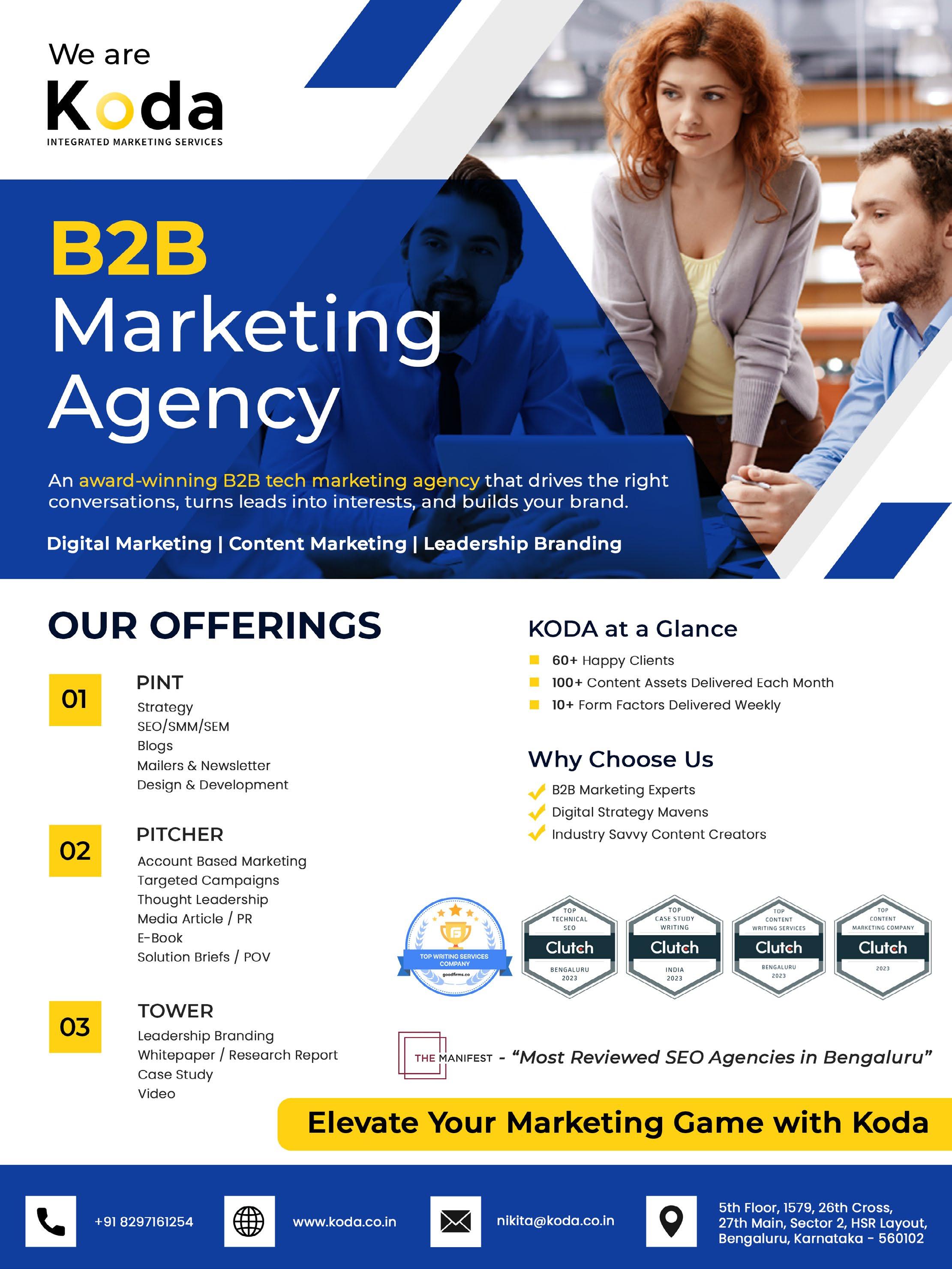
The insurance industry is undergoing a remarkable transformation thanks to technological advancements. InsurTech, a blend of insurance and technology, is revolutionizing the sector by introducing innovative solutions that enhance efficiency, reduce costs, and improve customer experiences. In this blog post, we will explore the top 10 InsurTech innovations that are reshaping the insurance landscape.
1. Artificial Intelligence (AI) and Machine Learning (ML)
AI and ML are at the forefront of InsurTech innovations. These technologies are used for risk assessment, fraud detection, and customer service. AI algorithms can analyze vast amounts of data to identify patterns and predict future risks, enabling insurers to offer personalized policies. ML models help in detecting fraudulent claims by recognizing unusual patterns and behaviors.
2. Internet of Things (IoT)
The IoT is transforming the way insurers assess risks and interact with policyholders. Connected devices, such as smart home systems and wearable health trackers, provide real-time data that insurers use to tailor policies and premiums. For instance, telematics devices in vehicles monitor driving behavior, allowing insurers to offer usage-based insurance (UBI) policies that reward safe driving.
3. Blockchain Technology
Blockchain technology ensures data security, transparency, and efficiency in the insurance industry. It simplifies claims processing by providing a decentralized ledger that records all transactions. Smart contracts on the blockchain automatically execute insurance policies when predefined conditions are met, reducing paperwork and speeding up the claims process.
4. Big Data Analytics

Big data analytics is revolutionizing the insurance sector by providing deeper insights into customer behavior and risk patterns. Insurers use big data to analyze vast amounts of information from various sources, such as social media, wearable devices, and public records. This enables more accurate risk assessment, better pricing models, and improved customer segmentation.
5. Robotic Process Automation (RPA)
RPA automates repetitive and time-consuming tasks, such as data entry, policy administration, and claims processing. By using software robots to handle these tasks, insurers can reduce operational costs, minimize errors, and free up employees to focus on more complex and value-added activities.
6. Chatbots and Virtual Assistants
Chatbots and virtual assistants powered by AI are transforming customer service in the insurance industry. These tools provide instant responses to customer queries, process claims, and offer policy recommendations. They enhance customer satisfaction by providing 24/7 support and reducing waiting times.

Digital platforms and ecosystems are creating new opportunities for insurers to collaborate with other service providers. These platforms offer a seamless experience for customers by integrating various services, such as insurance, healthcare, and financial planning. They enable insurers to offer bundled products and cross-sell additional services, enhancing customer value.
With the increasing digitization of insurance services, cybersecurity has become a top priority. InsurTech companies are developing advanced cybersecurity solutions to protect sensitive customer data and prevent cyberattacks. These solutions include encryption, multi-factor authentication, and real-time threat detection.
Parametric insurance is an innovative solution that pays out claims based on predefined parameters or triggers, such as natural disasters or weather events. Unlike traditional insurance, which requires a lengthy claims process, parametric insurance provides quick and transparent payouts, reducing financial uncertainty for policyholders.
Digital underwriting leverages AI, big data, and predictive analytics to assess risks and determine policy terms more accurately and efficiently. This innovation streamlines the underwriting process, reduces the time required to issue policies, and enhances the overall customer experience.
Conclusion
The insurance industry is embracing technological advancements to stay competitive and meet the evolving needs of customers. InsurTech innovations, such as AI, IoT, blockchain, and big data analytics, are transforming the sector by enhancing efficiency, reducing costs, and improving customer experiences. As these technologies continue to evolve, the future of insurance looks promising, with more personalized and efficient services for policyholders.


The e-commerce landscape thrives on innovation and a constant race to stay ahead of the curve. With rising customer acquisition costs and an increasingly competitive market, brands are constantly seeking out new ways to enhance the customer experience, drive conversions, and foster brand loyalty. In this dynamic environment, Shipway Technologies, a leading logistics automation company established in 2015, has unveiled its latest offering this year: The ConvertWay.
The ConvertWay by Shipway is the brainchild of Mr. Gaurav Gupta and Mr. Vikas Garg, founders of Shipway. Their shared vision and complementary expertise led to the creation of Shipway.
Intrigued by how The ConvertWay leverages first-party data and gamification to drive conversions? we delve into the minds of the founders of The ConvertWay. Stay tuned to glean their insights and life lessons for building a thriving business in the ever-evolving e-commerce world.
Prime Insights: What inspired you to start your tech company?
The rising cost of customer acquisition, especially with reliance on unreliable cookie-based data, is a major pain point. In logistics, we handle millions of orders monthly, generating massive amounts of valuable first-party data. We saw an opportunity to leverage this data to help merchants segment their audiences and personalize the customer journey. By analyzing buying patterns and behaviors, we can help reduce customer acquisition costs and improve return on ad spend (ROAS).
Prime Insights- What were the initial challenges your business faced?
Early on, building a one-stop solution for DTC brands was tough. Many struggle with customer engagement and retention. You need a system to remind people to reorder. Manual reminders are impossible, so automation is key. This focus on retention, conversion, and personalized engagement through data is what sets The ConvertWay apart. This strong data foundation allows for effective marketing campaigns across SMS, WhatsApp, and gamified experiences. We then analyze these campaigns to optimize performance and reduce costs, ultimately maximizing ROI.

Mr. Gaurav Gupta and Mr. Vikas Garg Founder
Prime Insights- How does your brand define “innovation” in the market? What makes it unique?
Our secret weapon is first-party data. We use it with cutting-edge AI, like generative AI, to create micro-segments and personalize the customer journey. This lets us automate capturing buying behavior and identifying drop-off points. Imagine someone browsing our website; we can see when they’re about to leave and nudge them back with a personalized message, boosting sales.
Prime Insights: What are your key offerings (products, services, or solutions)?
Our core offerings help D2C merchants thrive. First, we convert website visitors into paying customers. Second, we use smart segmentation based on our data to personalize the buying journey.

Finally, we boost engagement and conversions, helping merchants achieve a 40% conversion rate from existing buyers and a 5x return on investment from their marketing campaigns.
Prime Insights: In an age of rapid technological change, how are consumer expectations evolving regarding innovation?
Consumers crave innovation that boosts conversions. They expect unique solutions, not just rehashed technologies. Our focus is on inventing new flows and experiences to achieve this. Ultimately, they want lower customer acquisition costs and stronger buyer relationships. Conversion and retention are important, but fostering a personal touch is key to building brand loyalty and long-term recall.
Prime Insights: How did you establish your company’s reputation in the tech industry and gain customer loyalty?
Since day one, Shipway has been a customer-centric company. We have a dedicated team that actively listens to feedback. We personally connect with D2C brand founders and leaders to understand their needs and challenges, both with our product and in the broader market. This allows us to develop solutions that address their pain points and meet market demands. Furthermore, we’re committed to providing exceptional support to all our clients, regardless of their size. Everyone receives the same level of dedication from Shipway.
Prime Insights: What does customer satisfaction mean to you?
Customer satisfaction, for me, boils down to truly listening and understanding their pain points. As a tech partner, we believe technology can solve anything. Our solutions shouldn’t be bandaids; they should provide permanent fixes and anticipate future needs. Focusing on long-term improvements ensures we’re solving problems for years to come. The ultimate satisfaction comes from hearing our clients say our solutions helped them achieve their goals, whether it’s increased ROI or overcoming a specific challenge. There’s no greater happiness than knowing we listened and delivered value.
Prime Insights- How well are your clients connected with your brand, and what strategies do you use to maintain these connections?
Our dedication to customer satisfaction starts with dedicated account managers for every client, regardless of size. We prioritize clear communication; you can always reach your account manager directly. Forget impersonal ticketing systems; we offer immediate support by phone. Furthermore, we’re committed to proactive solutions. If a client encounters a common issue, we develop a fix that benefits multiple clients, ensuring a swift resolution and a commitment to exceeding expectations.
Prime Insights: What are the most effective marketing initiatives or programs you have used to promote your innovations?
Our success hinges on word-of-mouth. Satisfied clients recommending our solutions and support fuel our growth. We foster this by building a strong D2C community where
positive experiences spread organically. Additionally, we host knowledge-based webinars led by industry experts, which tackle common pain points and raise brand awareness. This one-two punch of exceptional service and market education creates a buzz that translates to new clients.
Prime Insights: How do you measure the impact of your innovations on consumer trust and satisfaction?
We measure success by two key metrics: low negative feedback and a low churn rate (around 5-6%). This tells us our clients are happy and using our solutions for the long term, indicating high customer lifetime value and a strong commitment to meeting their needs.
Prime Insights: What’s the first thing that enters a consumer’s mind when they think of your brand?
When it comes to brand perception, I hope customers think of us as three things: First, a company that prioritizes customer success. Second, a provider of exceptional support, regardless of client size. Finally, a one-stop shop for D2C brands, offering everything from pre-purchase marketing automation to postpurchase logistics and communication. We understand that small businesses and startups can’t afford to have multiple tools and support teams, so we offer a comprehensive solution with a single point of contact. This simplifies their operations and allows them to focus on what they do best.
Prime Insights: What are your future plans for continuing to innovate and grow your brand?
Our future is about building a complete D2C ecosystem. We’re innovating to offer everything brands need on one platform, from marketing automation to logistics. This one-stop shop will empower D2C merchants to thrive.
Prime Insights: What advice would you give to aspiring tech entrepreneurs and marketing mavericks?
For aspiring entrepreneurs and marketing mavericks, my advice is simple: master the fundamentals first. Truly understand your customer’s pain points. Don’t chase after creating something entirely unique; focus on solving those core needs effectively. Listen intently to your target audience; they’ll guide you towards building solutions and shaping your brand positioning. By constantly engaging with your customers, you’ll gain invaluable direction for innovation and future success.
Prime Insights: What are your thoughts on the current state of the tech industry and future trends?
The tech industry is a whirlwind of innovation. To stay relevant, we can’t afford to be stagnant. We need to constantly evolve alongside emerging trends, whether it’s AI or the latest tech buzz. Customers trust companies that keep pace. That’s why The ConvertWay by Shipway Technologies is built to be futureproof. We target the ever-evolving e-commerce landscape, ensuring our solutions stay ahead of the curve and our clients remain competitive.

In today’s digital age, establishing trust through your online presence is essential for businesses and individuals alike. With consumers relying heavily on the internet to make purchasing decisions and form opinions, having a trustworthy online image can significantly impact your success. From small businesses to large corporations, building trust online is a multifaceted process that involves various strategies and considerations. In this guide, we’ll explore the importance of trust in the online world and provide actionable tips for enhancing your credibility.
Before delving into strategies for building trust online, it’s crucial to understand why trust matters. In a virtual environment where face-to-face interactions are limited, trust serves as the foundation of relationships between businesses and consumers. When individuals trust a brand or individual online, they are more likely to engage with their content, make purchases, and recommend them to others.
One of the primary reasons why trust is vital for businesses is its direct correlation with conversions. Studies have shown that consumers are more likely to purchase from brands they trust. When visitors land on your website or social media profiles, their level of trust influences whether they choose to explore further, sign up for your services, or make a purchase.
In a saturated online marketplace, trust can be a significant differentiator for businesses. With countless options available to consumers, they are more likely to choose brands they perceive as trustworthy. By establishing yourself as a credible and reliable source, you can gain a competitive edge over your competitors and attract more customers.
Strategies for Building Trust Online
Now that we understand the importance of trust, let’s explore some effective strategies for building trust online:
Content is king in the digital world, and producing high-quality, informative content is essential for building trust. Whether it’s blog posts, videos, or social media updates, focus on delivering value to your audience. By consistently offering valuable insights and solutions to their problems, you can establish yourself as an authority in your niche.
2.
Transparency is key to building trust online. Be open and honest with your audience about your products, services, and business practices. Avoid deceptive tactics or exaggerations, as they can erode trust and damage your reputation. Authenticity is also crucial – let your personality shine through in your communications to connect with your audience on a personal level.
Social proof, such as customer reviews, testimonials, and endorsements, can significantly impact trust levels. Display positive feedback from satisfied customers prominently on your website and social media channels. Encourage satisfied customers to leave reviews and share their experiences with others, further solidifying your credibility.
In an era of increasing cybersecurity threats and privacy concerns, prioritizing the security of your website and the protection of customer data is essential. Invest in robust security measures, such as SSL encryption and secure payment gateways, to reassure visitors that their information is safe with you.
Building trust is a two-way street, and engaging with your audience is crucial for fostering meaningful relationships. Respond promptly to comments, messages, and inquiries from your followers. By showing that you value their input and are attentive to their needs, you can build trust and loyalty over time.
Maintaining consistency across all your online channels is essential for building trust and brand recognition. Ensure that your messaging, branding, and tone of voice are cohesive across your website, social media, emails, and other communication channels. Consistency breeds familiarity and reinforces trust in your brand.
Conclusion
In conclusion, building trust through your online presence is essential for establishing credibility and driving success in today’s digital landscape. By providing high-quality content, being transparent and authentic, showcasing social proof, prioritizing security and privacy, engaging with your audience, and maintaining consistency across channels, you can effectively build trust and foster meaningful relationships with your audience. Remember, trust is not built overnight, but with dedication and effort, you can create a strong and reliable online image that resonates with your target audience.





























